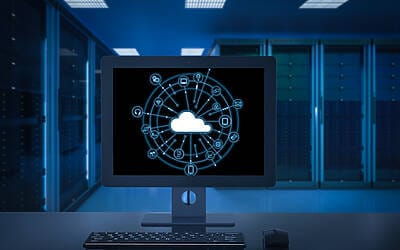As an IT business leader, it’s normal to have concerns about business interruption and its potential impact on business resilience. Simply from reading the daily news, it is easy to see how much revenue or productivity is lost in organizations of all sizes from data breaches and other cybersecurity incidents.
In this blog post, we discuss business reliance, business continuity, and other key concepts business leaders need to protect their company’s data.
What is Business Resilience?
By the ISO 22316:2017 standard, business resilience is your organization’s ability to absorb and adapt in an evolving environment to continue to meet its objective and prosper. There are so many challenging trends that businesses face that business leaders need to be able to navigate, including pandemics, cyberattacks, remote work, telecommunications outages, and regulatory changes. Companies with low levels of business resilience are less likely to be able to cope and adapt.
What Does Business Resilience Have to Do With Business Continuity?
Business continuity is your company’s ability to continue to deliver its products or services at acceptable levels after a business disruption. According to the ISO 22300:2018 standard, it is important that these levels are predefined. In most cases, this looks like a disaster recovery plan that contains procedures that allow your company to continue operating during a crisis.
By comparison, business resilience is your company’s ability to survive an unexpected disruption and recover. Most companies cannot recover without a good business continuity plan in place.
Potential Consequences of Data Loss
Ransomware or data loss of another kind has a significant impact on businesses. When businesses do not have their data, or it takes too long to restore their data, they will potentially lose an exponential amount of money from downtime, idle employees, and customers turning to other vendors.
Basics of Business Continuity Planning
When creating a business continuity plan, it generally needs to include these components:
- Risks – Your business continuity plan must outline the risks that your unique business may face. This will vary based on its size, geographic location, and industry.
- Responses – For each risk, there needs to be a detailed set of responses and actions to take in the event of a disaster.
- Roles and Responsibilities – The plan should clearly delineate which staff members and/or vendors are responsible for what. There should be no confusion in terms of responsibility in the aftermath of a disaster.
- Communication – Communication after a business disaster comes in many forms and must be accounted for. How will staff be notified? What communication will customers receive?
- Training – Training employees who are responsible for tasks after a business disaster is critical in ensuring that the actions are carried out correctly. If employees don’t participate in regular training, they may not remember what to do when disaster strikes.
- Testing – Testing is extremely important to know whether a business continuity plan will work if it is needed. According to Veeam’s 2023 Data Protection Trends Report, frequent testing (at least every 6 months) and automation are key elements of business continuity plans.
A strong, well-tested business continuity plan is essential for business resilience. The internal operations within a company change fairly often so a bcdr review followed by updating business continuity plans to account for any changes should be part of your standard practice. As the COVID-19 pandemic illustrated, the most agile and prepared companies were often the most ready to pivot to remote working.
RPO vs. RTO
When developing a business continuity plan, the concepts of RPO and RTO should be incorporated. RPO stands for Recovery Point Objective. This refers to the maximum amount of time allowed that you can restore data from. It is the age of the data stored in the backup system required to get back to normal business operations. If your company decides on a two-hour RPO, you would have a backup scheduled every two hours. In the event that an incident occurs, you could restore from the last backup.
RTO stands for Recovery Time Objective, which is the duration between the business failure and the return to normal operations. Generally, this is a goal or target used to identify how much time can pass before even more critical situations occur. If you have a five-hour RTO, systems need to be restored in five hours from the incident.
Essentially, RPO is the time between backups and RTO is the time allowed to recover lost data. These figures relate to your company’s specific loss tolerance. To figure it out, you will need to think about opportunity costs and how long your company can continue to operate without its data.
All companies are different. Perhaps a house cleaning company could operate for a few days without accepting new customer appointments or accessing company data. However, an online business that delivers meal kits could last for far less time, as the food expires, and there isn’t a way to know which customers ordered what.
Secure Data Protection
Disaster recovery is a key element in business continuity and data protection. While the software and services your company uses will make a big difference in your likelihood of preventing and detecting vulnerabilities, it is equally important to have a solid disaster recovery plan in place.
Improve Your Company’s Business Resilience
Business resilience is crucial to business profitability, and data protection and recovery are the foundations. For many organizations, opting for Disaster Recovery as a Service is a logical solution to leverage. Contact Different Dev to learn more about what solutions we have to help improve your company’s business resilience.




